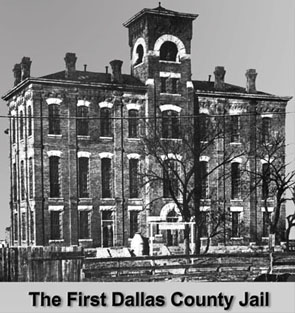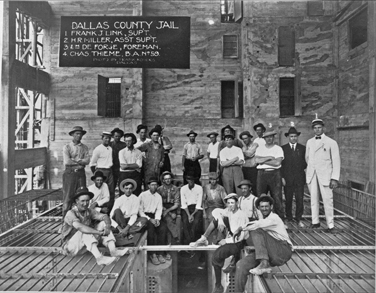With respect and gratitude for the men and women who worked tirelessly to put together the Commemorative Edition for the Department in 1982 and again in 1988, this section is being reprinted from the past. This will benefit all who did not have an opportunity to acquire prior publications.
The years that followed have been encapsulated and added to bring their arduous task of yearbook making together with recent history making moments to provide an up to date reflection of events our agency has experienced over the years since.
History of Dallas County Sheriff’s Department – By Dick Hitt
Researched by Deputy Nancy Stout – (Commemorative Edition, 1982)
Defense was a worrisome necessity in the frontier wilds of Texas in 1846. Many Texans will be sensitive and, well, defensive to admit it, but Texans have always needed defending from: hostile Indians, from Mexico, from various marauders, from each other. Texas needed so much defending that when it was annexed to the United States of America in 1845, it immediately swallowed up almost half of the standing U.S. Army. The U.S. established 19 forts throughout Texas, the ex-nation turned 28th State; and to garrison so many forts required up to 4,000 troops.
In 1846, the creation of the city of Dallas was still a decade away. But shortly after the annexation, on March 30, 1846, the first State Legislature created Dallas County. The town already known as Dallas, though still to be incorporated, was designated as temporary county seat. There were more than a hundred permanent citizens in the town by then, and several towns that scattered across the area embracing the three forks of the Trinity River. Nine Indian tribes had disputed the access to those murky, undistinguished three forks with the white settlers and each other.
As a civilization, the County had a mediocre location. It was situated at the foot of the petering out of plains, but not yet part of the escarpment country; it was neither hill nor dale. There was bad drinking water, a profusion of natural obstacles, a susceptibility to natural disasters, floods, prairie fires, and always the Indians. There was never to be a Texas-OU weekend half as damaging as the forays being made into Dallas County in its first two decades by the racing bands of Choctaws, Chickasaws and Kickapoos coming down from Indian Territory for the weekend. Many of the communities in Dallas County were being settled at about the same time, by about the same kinds of people. They were mostly farmers and their families, here from Tennessee, Kentucky, Missouri, Virginia, Louisiana, and Mississippi, together with newly landed Germans and French, and the forebears of Poles and Czechs. It was necessary to farm.
Those who came from other states as physicians, lawyers and merchants had to scrabble as farmers first, and ply their professions second. Despite the drawbacks of geography, the land was lush. The settlements along the river grew, and as their economies became more sophisticated, so did the problems of crimes where people gather. The primary problems in those days were cattle and horse thieves, various disturbances and disagreements among gentlemen, and the statutory need for maintaining for the county a place of incarceration.
 |
 |

